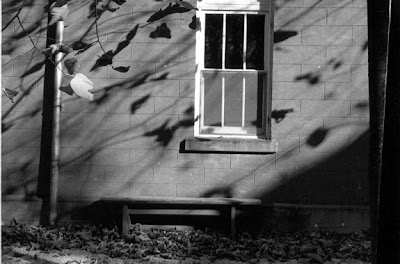Photo, Untitled, by Thomas Merton
"To deliver oneself up, hand oneself over, entrust oneself completely to the silence of a wide landscape of woods and hill, or sea, or desert: to sit still while the sun comes up over the land and fills its silences with light. To pray and work in the morning and to labor in meditation in the evening when night falls upon that land and when the silence fills itself with darkness and with stars. This is a true and special vocation. There are few who are willing to belong completely to such silence, to let it soak into their bones, to breathe nothing but silence, to feed on silence, and to turn the very substance of their life into a living and vigilant silence."
~Thomas Merton
For many days we have had the words “Slow down . . . to the pace of the soul” hoisted up on the mast of this blog. Could it be that we have heeded our own advice, and not been tempted into a sense of obligation to post something? Silence here comes mostly from the constraints of our otherwise selves, apart from blogs: the stuff of life. But there is also something promising in this quiet, if it points to the “living and vigilant silence” Merton attended to, and Martha Graham demonstrated with her hands and countenance (see last post).
Silence in this quoted passage is something to be entered, and filled. Note the verbs Merton writes: deliver oneself up, hand oneself over, entrust oneself completely . . . fills, belong to, soak, breathe, feed on, and then turn into. For him silence sustains and nourishes. You might even feel that if it weren't for silence, he might not survive, with his soul intact.
If silence is to be submitted to, then it has authority. If it is to be entered, the way light enters it when the sun rises, then it is a space. If you can belong to it, then it is a proprietor. If it is air, and food, then it becomes a habit, necessary to life itself. And then, as if to say "you are what you eat" because what you invite into your bones, you become, Merton says we can turn the stuff of life into silence, to be the silence in the end!




